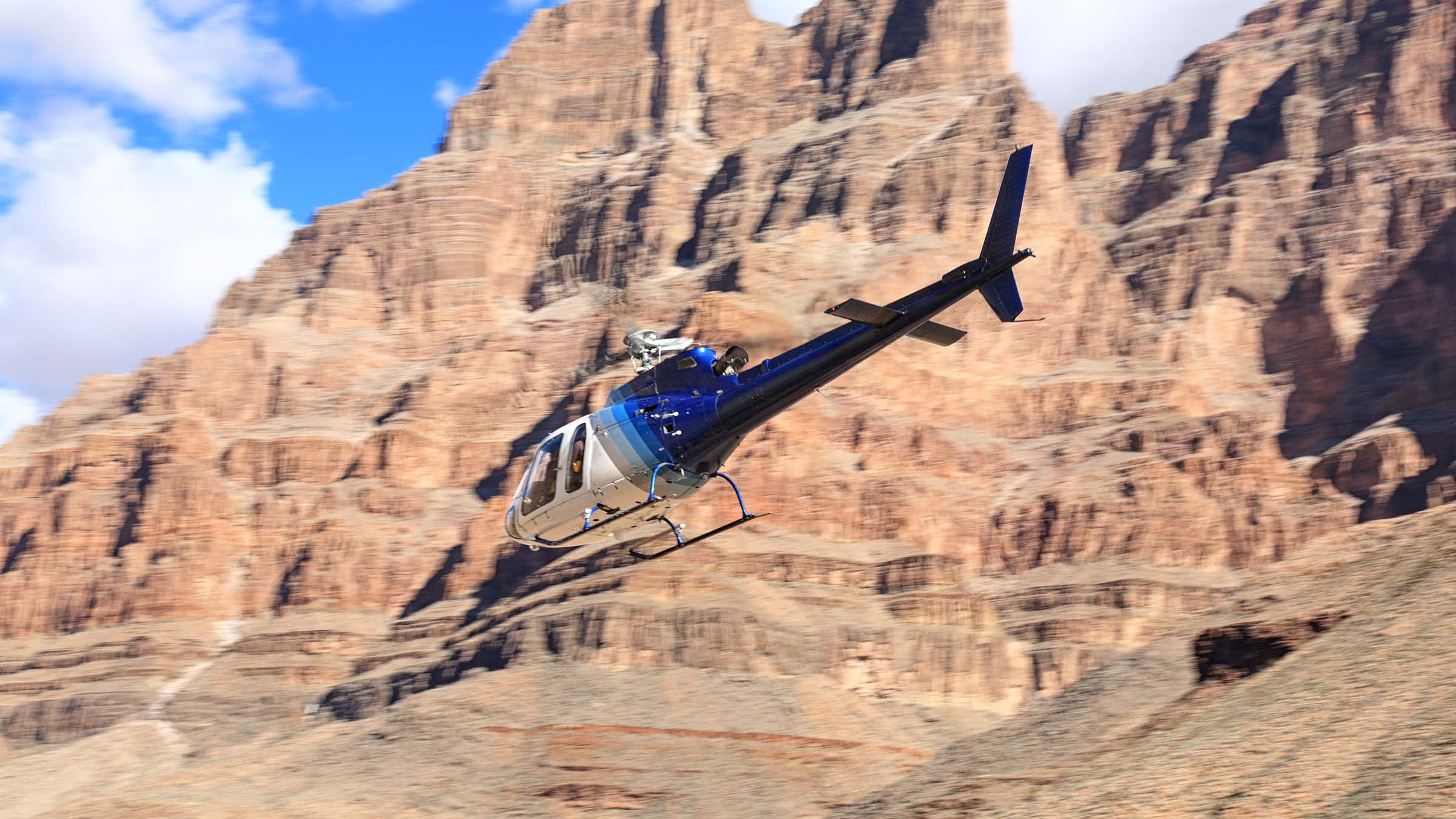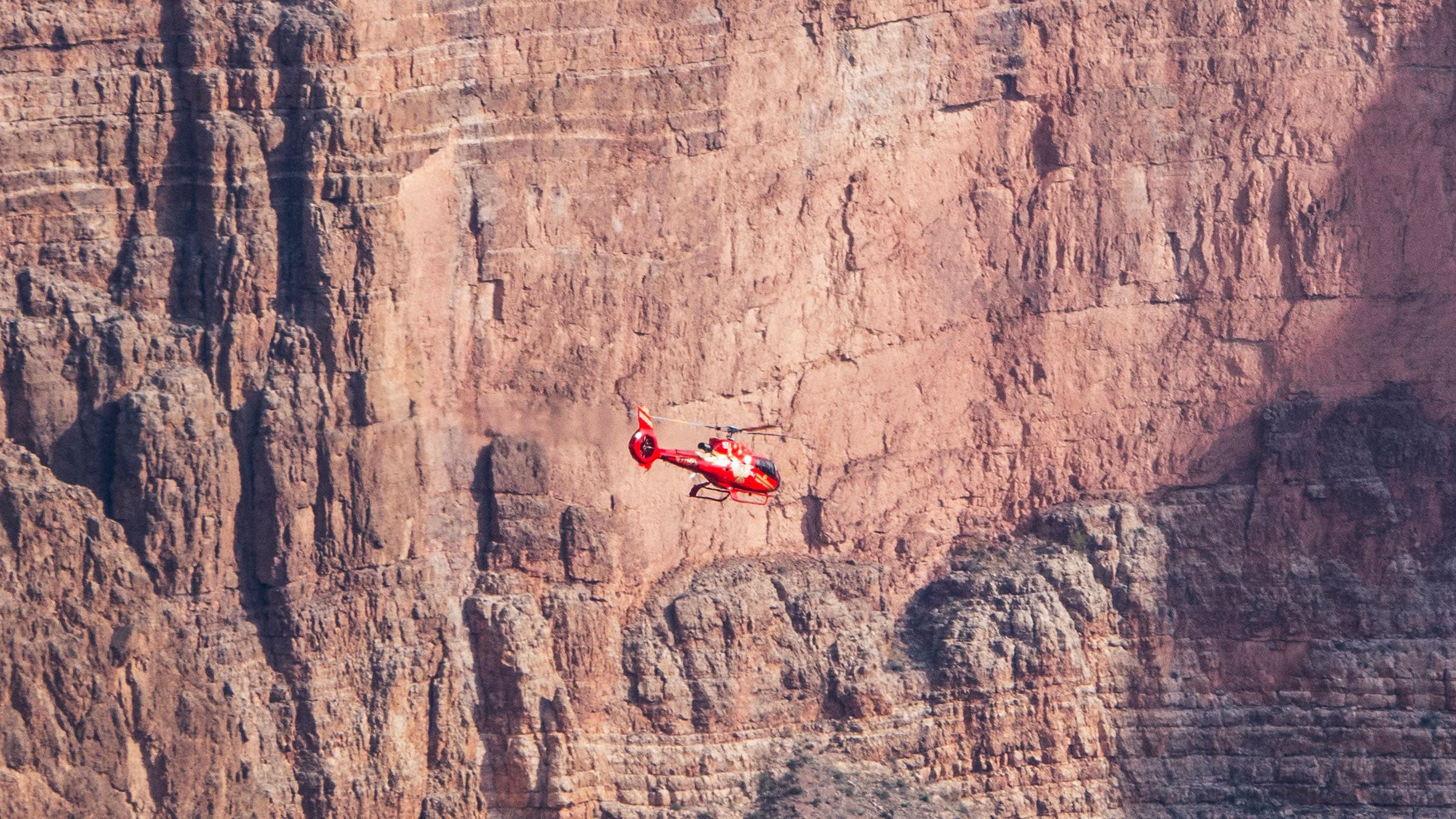Opinion: Ban Aerial Tours in the National Parks

A helicopter flies in the Grand Canyon. (Photo: vuk8691 via Getty)
I remember the ecstasy of reaching the end of the Kalalau Trail along the Na Pali Cost of Kauai after a volcanic, 22-mile approach. The path opened onto an idyllic sand beach, shrouded by jungle and rocky cliffs that plunged into the Pacific. Just moments after my blissful arrival at Kalalau Beach, reachable only by foot or kayak, the war-zone chop of a helicopter hammered through the air as it hovered above me with a gaggle of tourists peering out the windows. Needless to say: nothing ruins the special quietude of a natural place like a helicopter tour.
The Na Pali Coast is inside a state park (and not subject to federal oversight) but this scene is not uncommon in many of the country’s 63 designated national parks, where aerial sightseeing has been legal and unchecked since some of them were established. In 2000, Congress passed the National Parks Air Tour Management Act, which required that the Federal Aviation Commission and National Park Service jointly develop plans and limits for 23 parks (including some of the most visited, like Mt. Rainier and Canyonlands). In 21 years, the number of parks with an Air Tour Management Plan? Zero.

For the NPS, the priority is conservation and visitor experience. The FAA, which has the final say regarding management plans, cares primarily about air traffic safety. While the two organizations fought over minute details like siblings over a teddy bear, commercial air tour operators have had little restriction on where, how often, and at what altitude they could fly. Finally, in 2020, a federal circuit court judge broke through the stalemate after a pair of nonprofits brought a lawsuit against both organizations over the lack of air tour management at Hawaii Volcanoes National Park and Haleakala National Park. (The former has the most air tourism of any park on the list, with some 9,276 flights reported in 2019). The judge ordered the agencies to get their management plans in order by 2022.
The federal government established the national parks to preserve the most astounding, fragile ecosystems in our country, while allowing visitors to take in that natural splendor without causing harm. On land and sea, these parks are well protected, with flora and fauna at the forefront. Why should visitors coming by air be any different? Is the thrill of a flyby worth disrupting wildlife habitat, or breaking the meditative silence for thousands of visitors on the ground? In the opinion of someone who spends as much time as possible exploring these national parks by foot, I’d say it’s not.
Now is the time to make your voice heard. These air management plans, which the NPS and FAA will establish separately for each individual park, are currently in the public comment period. Virtual town halls will be held for 7 of the parks starting September 15 (several comment periods have already ended) and running through the end of the month. After that, the sanctity of our national parks is in the hands of the two agencies that have been bickering about this issue since some of their employees were children. For everyone’s sake, I hope they can work it out.